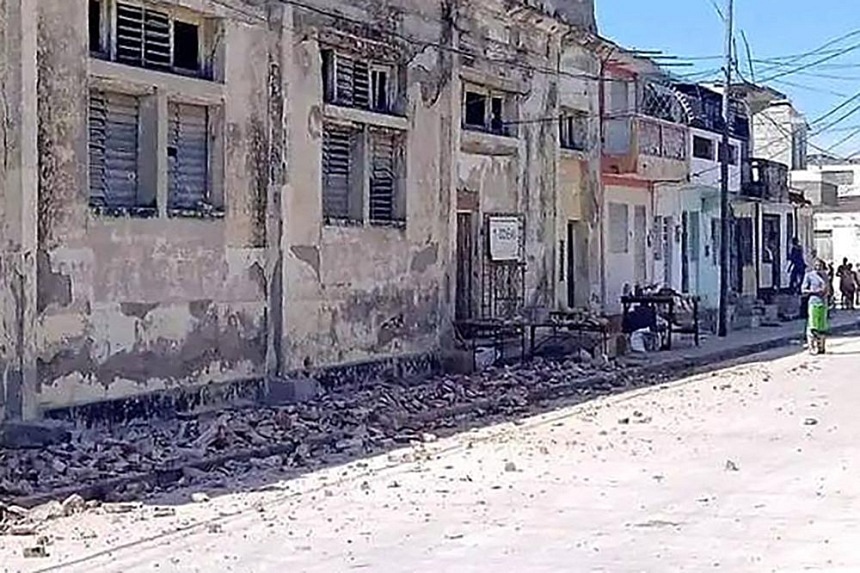HAVANA, (Reuters) – An earthquake rocked eastern Cuba today, shaking buildings in Santiago de Cuba, the island’s second-largest city, and the surrounding countryside.
The quake, which the U.S. Geological Survey listed as magnitude 6.8, struck Cuba’s southeastern coast in Granma province near the municipality of Bartolome Maso, where former Cuban leader Fidel Castro had his headquarters during the Cuban Revolution.
“There have been landslides, damage to homes and power lines,” said Cuban president Miguel Diaz-Canel on X. “We have begun to assess damages…the first and essential thing is to save lives.”
Reuters spoke with several area residents who reported the quake felt as strong as any in their lifetimes. Homes and buildings shook violently, they said, and dishes, glasses and vases rattled off shelves.
“We’ve felt earthquakes in the past, but nothing like this,” said Santiago resident Griselda Fernandez by telephone.
Many of the region’s homes and buildings are older and vulnerable to quake damage. State-run media published images of terracota roofs and facades of concrete block homes that had collapsed with the shake. Many images showed structural damage to ceilings, walls, windows columns as well as to public infrastructure.
The earthquake struck an island still struggling to recover from hurricanes. Much of Cuba’s eastern end was still digging out from a direct hit by Hurricane Oscar in October. Last week, Cuba’s national grid collapsed after Hurricane Rafael tore through the western end of the island, leaving 10 million without power.
Rolling, hours-long blackouts have been the norm for months across much of eastern Cuba, slowing reports of damages and complicating communications.
The 6.8 quake was at a depth of 14 km (8.7 miles), USGS said. About an hour earlier, an earthquake with a magnitude of 5.9 was measured nearby, according to the U.S. agency.
Cuban authorities said more than 15 perceptible aftershocks followed the first two jolts and warned locals to be vigilant as further aftershocks were possible.
The U.S. National Tsunami Warning Center said there was no tsunami threat expected.
Most seismic activity in Cuba takes place in the region around Santiago. A fault line runs along the island’s southeastern coast, marking the boundary between the North American plate and the Caribbean plate, according to Cuba’s seismic service.
The Cuban capital of Havana was not affected by the quake.






